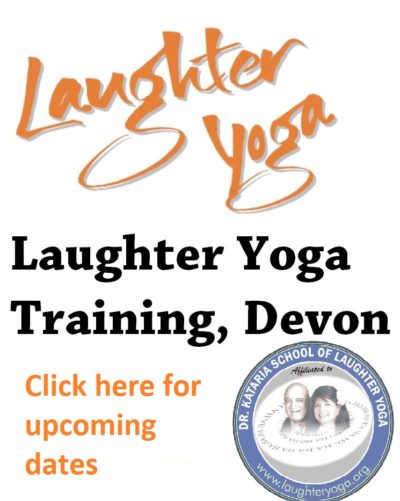 After a Laughter Yoga session, there are a number of ways to conclude and bring people back down from the euphoria of laughing. One way is to ask them to settle, relax and notice their breath as it flows in and out. Just bringing their attention back to the breath. Another is a reading guided meditations. This is brilliant in a group when you know you have the time, and you can choose an appropriate meditation for the group. Here are some tips on reading guided meditations
After a Laughter Yoga session, there are a number of ways to conclude and bring people back down from the euphoria of laughing. One way is to ask them to settle, relax and notice their breath as it flows in and out. Just bringing their attention back to the breath. Another is a reading guided meditations. This is brilliant in a group when you know you have the time, and you can choose an appropriate meditation for the group. Here are some tips on reading guided meditations
Before you start reading Guided Meditations:
Ensure you are familiar with the meditation. Read it to yourself. How does it flow? Are there errors in it, or elements that you think you might stumble over reading the guided meditation? If so, change the meditation so it is more appropriate to your style.
It might surprise you to know that for many people, their first time listening to a meditation can cause them concerns – they may be questioning “am I doing this right?”, or “does everyone have their eyes closed?” or even “what if I fall asleep and start snoring”.
For these reasons it’s important to have adequate pre-meditation setup. Address these issues with this script if you like:
“It is normal if your mind wanders during meditation. This happens even in experienced meditators. If this happens to you, just notice it, and then bring your attention back to my voice, or the meditation or whatever you are visualizing. Do this kindly and gently, as if you are guiding a small child.
“Some people might nod off for a few seconds during a meditation. Again, this is normal, so if you fall asleep for seconds, then just notice it, and kindly and gently bring your attention back to the meditation.
“External noises, shuffling, traffic, whatever noises you may notice, are fine. And it is also fine, if you need to move at all to make yourself comfortable, that you can do this. Please do it mindfully and with minimal disruption to other”.
Then, as you are reading Guided Meditations…
Make sure you are in a calm and peaceful state. Pay attention to your own state, whilst people are settling themselves, lying down, etc.
First breathe slowly and deeply, into your stomach and let people hear these long breaths, so they will also naturally slow their own breathing. Don’t do this to excess
When you start your meditation, start it with the phrase: “take two deep breaths” – and take two yourself, slowly and audibly.
Breathe in, slowly, and only speak on the out-breath. This may mean splitting sentences. That’s fine.
Use your own voice (don’t try to make it low or hypnotic) just speak with your own voice, but slower.
Enjoy reading the meditation. Take real pleasure in it. Whilst you need to be more alert than the meditators, you too can start to visualize.
After reading Guided Meditations
Make sure you give clear instructions for them to get up off the floor “Roll over to your side and slowly sit up, in your own time”.
Now give a little more time for people to “come round”, gently. Don’t rush this. Take time, scan the room.
Once everyone is seated and alert again, it can be useful to discuss the meditation experience. Remember the likely concerns – “am I doing this right?” – this discussion can give new-time meditators an opportunity to discover that everyone is having similar experiences. That other people had the same concerns, perhaps. This discussion can help to identify the benefits of meditation and encourage people to take their learning further:
Ask questions like: “how was that for you?”” How are you feeling right now?” “What are you experiencing in your body now” What has changed for you”?




